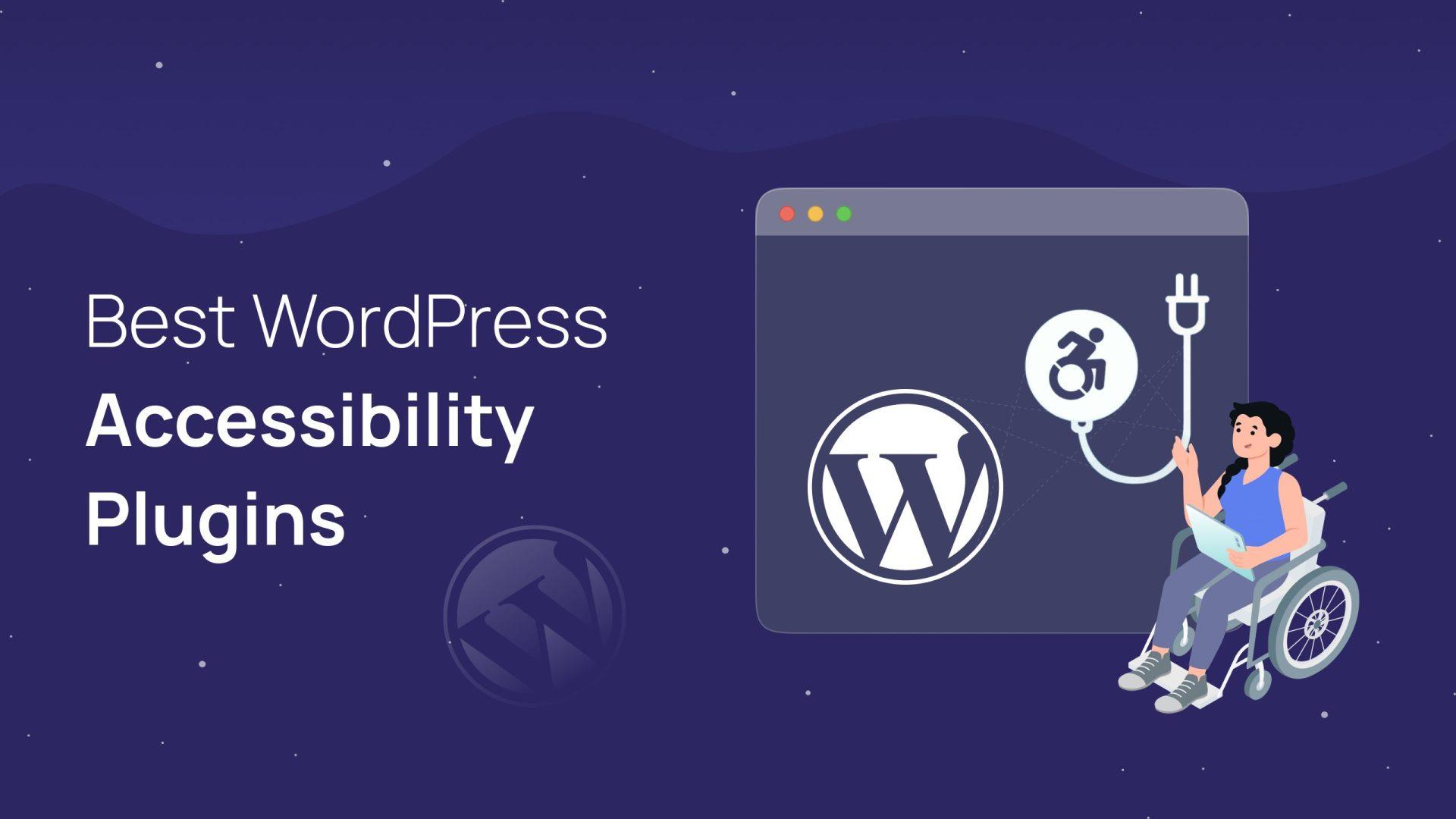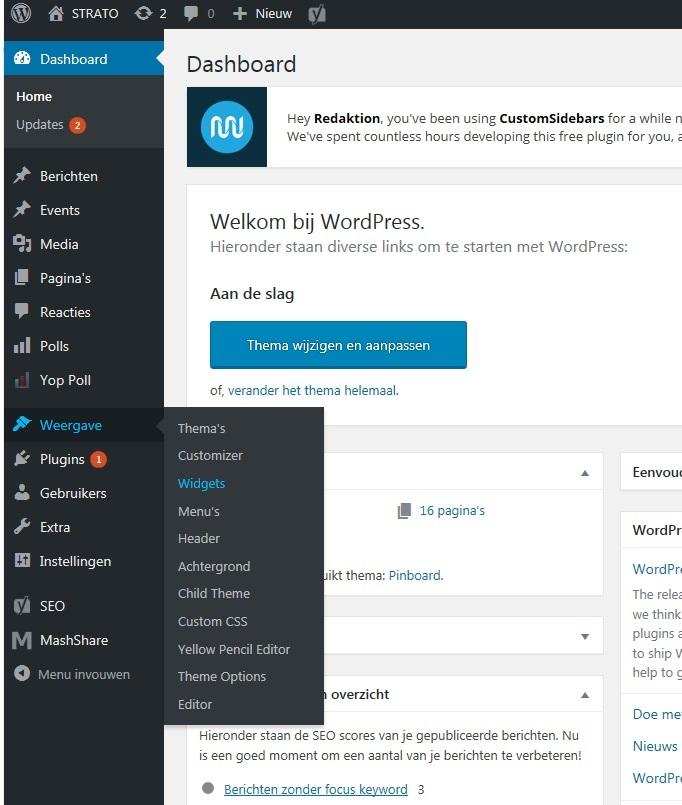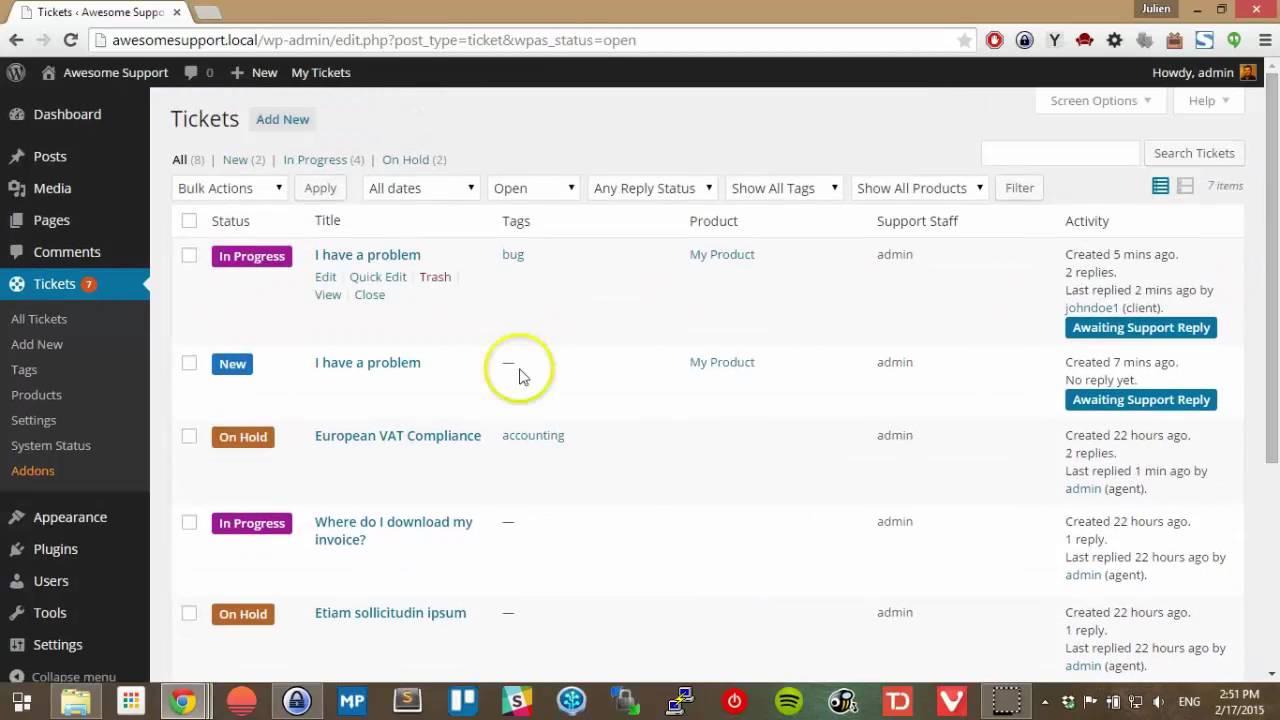Are you looking to make your WordPress website more accessible in 2025? You’re not alone! As web accessibility continues to gain importance, ensuring that everyone can navigate your site—nonetheless of their abilities—has never been more essential. The good news? There are fantastic plugins out there, both free and paid, designed to help you create an inclusive online experience. in this article,we’ll explore the nine best wordpress accessibility plugins that can transform your site into a welcoming space for all visitors. Whether you’re a seasoned developer or just starting out, these tools will empower you to enhance usability and meet accessibility standards without breaking the bank. Let’s dive in and discover how you can elevate your site’s accessibility game in 2025!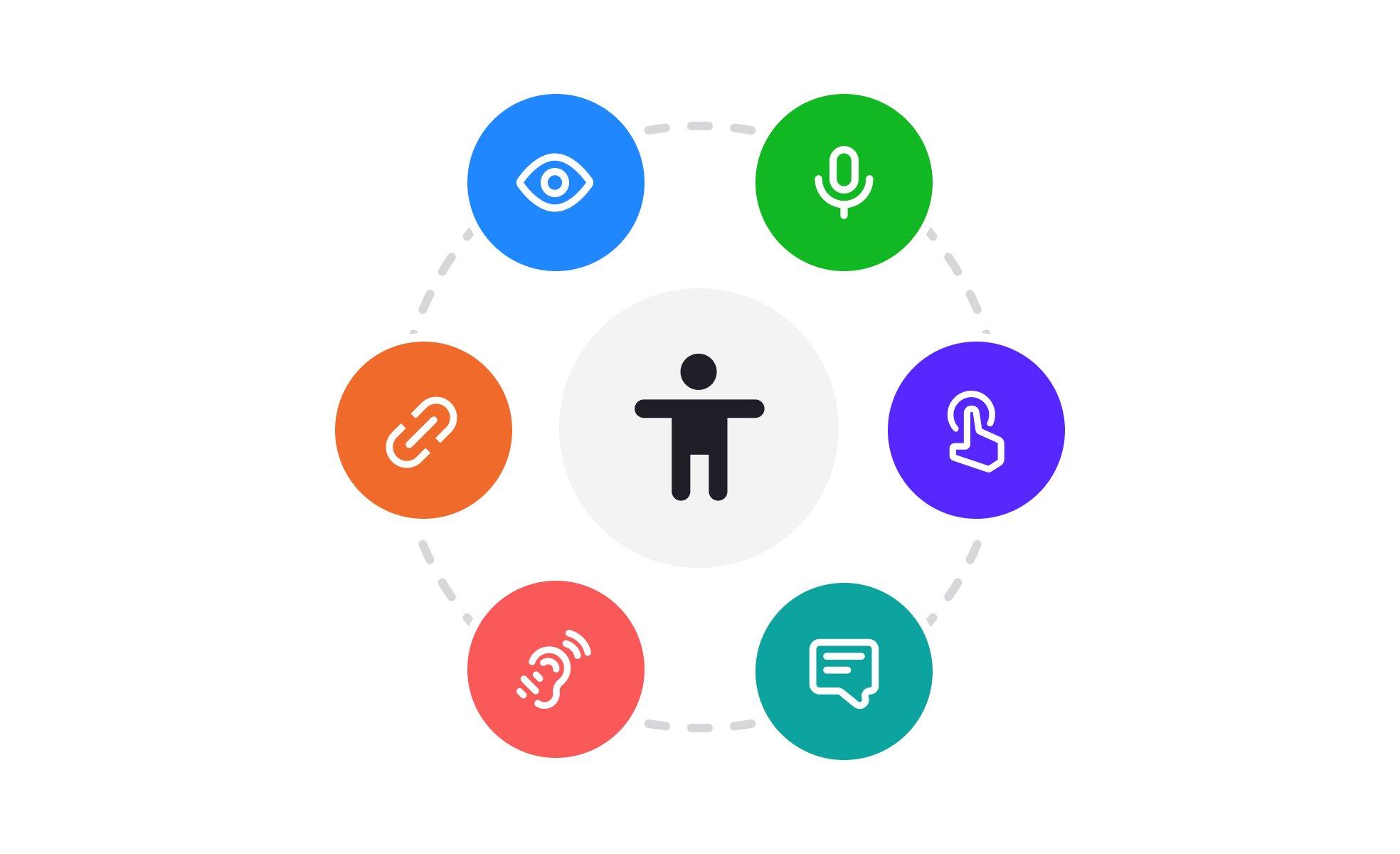
Exploring the Importance of Accessibility in Your WordPress Site
When building a WordPress site, the importance of accessibility cannot be overstated. An accessible website ensures that everyone, regardless of their abilities or disabilities, can navigate and interact with your content. This inclusivity not only fulfills legal obligations but also expands your audience and enhances user experience. By prioritizing accessibility, you demonstrate a commitment to social responsibility and create a welcoming online environment.
One of the primary reasons to incorporate accessibility into your site is to comply with regulations such as the Americans with Disabilities Act (ADA). Failing to meet these standards can result in legal repercussions and damage your brand’s reputation. By adopting accessible practices from the outset,you can avoid costly fines and promote a positive image for your business.
Moreover, accessibility features often lead to improved SEO performance. Search engines favor user-friendly sites, and many accessibility practices align with good SEO strategies. For example, using descriptive alt text for images not only aids visually impaired users but also allows search engines to index your images effectively. This dual benefit highlights how accessibility and SEO goals can go hand in hand.
Integrating accessibility plugins into your WordPress site is a practical solution to enhance usability. Here are some key features you should look for in these plugins:
- Keyboard Navigation: Ensures that users can navigate your site using only a keyboard.
- Screen Reader Compatibility: Provides clear content structure that screen readers can interpret.
- Color Contrast Adjustments: Allows users to modify color settings for better visibility.
- Text Resizing Options: Enables users to adjust text size for easier reading.
Utilizing these plugins not only makes your site more accessible but also enhances the overall user experience. To help you compare different options, consider the following table showcasing some popular accessibility plugins:
| Plugin Name | Type | Key Features | Pricing |
|---|---|---|---|
| WP Accessibility | Free | Keyboard navigation, skip links, and color contrast tools | Free |
| Accessibe | Paid | AI-driven accessibility adjustments, compliance monitoring | Starts at $49/month |
| One Click Accessibility | Free | Swift accessibility tools, font resizing, and contrast adjustments | Free |
| UserWay | Paid | Accessibility widget, compliance assessment, and reporting | Starts at $49/month |
By choosing the right accessibility plugins, you can make significant strides toward creating a more inclusive online presence. Remember, accessibility isn’t just a feature; it’s a fundamental aspect of your website that can influence your success and reputation in a digital-first world.
top Features to Look for in Accessibility Plugins
When choosing the right accessibility plugin for your WordPress site, several key features can substantially enhance the user experience for individuals with disabilities. First and foremost, look for thorough screen reader support. This ensures that your content is easily navigable and understandable for users relying on screen readers. The plugin should properly structure headings, lists, and links to facilitate seamless interaction.
Another essential feature to consider is the keyboard navigation capability.A good accessibility plugin should allow users to navigate your site using keyboard shortcuts. This is particularly significant for those who cannot use a mouse. Check for options that enable easy tabbing through interactive elements, along with visible focus indicators to guide users.
It’s crucial to look for color contrast adjusters and text resizing options. These features help users with visual impairments to customize their viewing experience according to their needs. Users should be able to change font sizes and contrast settings without affecting the overall layout of the site. Offering a variety of high-contrast color schemes can also enhance readability.
Moreover, a plugin that provides alternative text suggestions for images can be beneficial. This feature helps content creators ensure that every visual element on their site is accessible to users who rely on screen readers. It encourages better practices around image descriptions, which is vital for a fully inclusive website.
consider the user interface and customization options of the plugin. A user-friendly interface allows site owners to easily implement accessibility features without needing extensive technical knowledge. Look for plugins that offer drag-and-drop functionalities or intuitive settings panels. Additionally,the ability to customize accessibility features to suit your brand can enhance user experience without compromising your site’s visual identity.
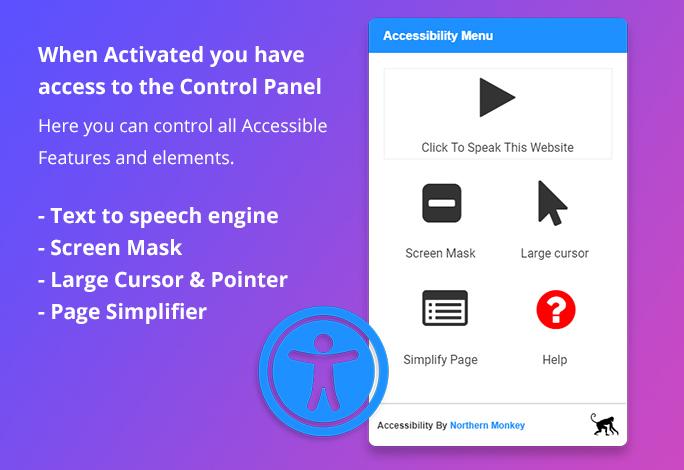
Uncovering the Best Free Accessibility Plugins for WordPress
Making your WordPress site accessible to everyone is not just a best practice—it’s a necessity.Fortunately, a range of free accessibility plugins can transform your website into a more inclusive space. These tools help ensure that all users, regardless of their abilities, can navigate your site with ease.
One of the standout options is the WP Accessibility plugin. It provides essential features like adding language attributes to your HTML, enabling skip links, and even adjusting color contrasts. This plugin is perfect for those who want a quick, no-fuss solution to enhance their site’s accessibility without diving deep into code.
Another great choice is Accessible Poetry. This plugin not only enhances the overall accessibility but also focuses on improving the experience for visually impaired users. It modifies your site’s elements to be more screen-reader friendly and allows you to customize settings according to your audience’s needs.
For those looking for something more comprehensive, consider WP Accessibility Helper. This tool provides a user-friendly interface allowing visitors to adjust text size, color contrast, and even line height. The flexibility it offers can significantly boost the user experience for individuals with various accessibility needs.
| Plugin Name | Key Features | Best For |
|---|---|---|
| WP Accessibility | Skip links, color contrast | Quick fixes |
| Accessible Poetry | Screen-reader friendly | Visually impaired users |
| WP Accessibility helper | User customization options | Enhanced user experience |
Additionally, One Click accessibility is perfect for site owners who want to make simple adjustments quickly. With just a few clicks, users can modify fonts and colors to suit their preferences. This plugin emphasizes a hassle-free approach, ensuring that accessibility features are just a button away.
Ultimately, investing time in these accessibility plugins not only broadens your audience but also demonstrates your commitment to inclusivity. By choosing the right tools for your WordPress site,you can create an environment where everyone can access your content without barriers.
The Standout Paid Accessibility Plugins You Should Consider
When it comes to enhancing the accessibility of your website, investing in a premium plugin can make all the difference. Here are some standout paid accessibility plugins that provide extraordinary features to ensure your site is user-friendly for everyone:
- WP Accessibility Pro – This plugin focuses on improving your site’s usability without sacrificing aesthetics.With features like ARIA landmarks and color contrast adjustments, it’s designed for seamless integration into your existing theme.
- Accessibility Checker Pro – Perfect for those who want ongoing compliance, this plugin not only scans your site for accessibility issues but also provides suggestions for fixes, ensuring you’re always in line with the latest accessibility standards.
- wpAccessibility Pro – aimed at providing comprehensive solutions, this plugin enhances navigation through keyboard shortcuts and mouse-free options, making it easier for individuals with disabilities to engage with your content.
- UserWay – This robust widget allows users to customize their accessibility experience with features like text resizing, contrast adjustments, and screen reader support, empowering visitors to access your content in a way that works for them.
- Accessible Poetry – If your site includes multimedia content, this plugin adds captions and transcripts automatically, ensuring that everyone, including those with hearing impairments, can enjoy your media.
When selecting a paid plugin, consider the specific needs of your audience. Here’s a quick comparison to help you choose:
| Plugin | Key Features | Price |
|---|---|---|
| WP Accessibility Pro | ARIA landmarks, color contrast | $49/year |
| Accessibility Checker Pro | Ongoing compliance scans | $99/year |
| wpAccessibility Pro | Keyboard navigation, mouse-free options | $59/year |
| userway | Accessibility customization widget | $39/year |
| Accessible Poetry | Automatic captions/transcripts | $79/year |
By choosing one of these premium plugins, you’re not only complying with legal standards but also creating a more inclusive and welcoming online environment. Don’t let accessibility become an afterthought; invest in these powerful tools to give everyone a chance to engage with your content fully.
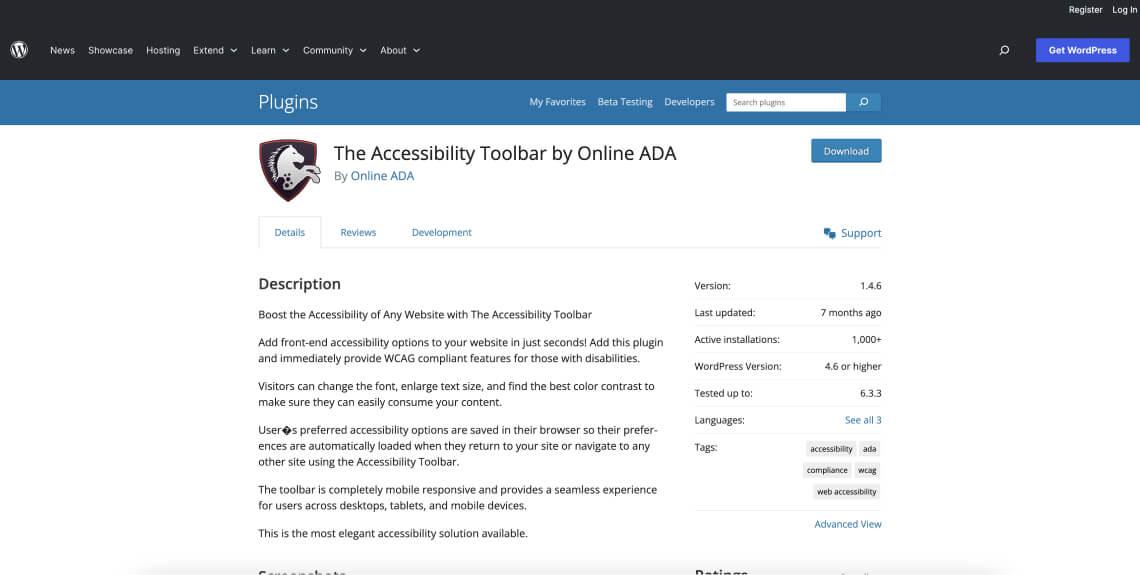
How to Choose the Right Plugin for Your Unique Needs
Choosing the perfect plugin for your website can feel overwhelming, especially with the myriad of options available. To ensure you’re selecting the right accessibility plugin, consider the following factors:
- User Needs: Identify the specific needs of your audience. Are they experiencing visual impairments, hearing difficulties, or cognitive challenges? Understanding your audience’s unique requirements can help you select a plugin that truly enhances their experience.
- Compatibility: Make sure the plugin is compatible with your current theme and othre plugins. A well-integrated plugin minimizes conflicts and ensures a smoother user experience.
- Ease of Use: Look for plugins that offer an intuitive interface. If a plugin is challenging to navigate, it may hinder rather than help your website’s accessibility.
Additionally,it’s essential to examine the features offered by each plugin. Some plugins may provide basic accessibility features, while others may include advanced options such as:
- Keyboard navigation
- Screen reader support
- text resizing and color contrast adjustments
To help you compare different options, here’s a simple table highlighting some popular plugins and their standout features:
| Plugin name | Free Version | Key Features |
|---|---|---|
| WP Accessibility | Yes | Supports alt text, keyboard navigation |
| One Click Accessibility | Yes | Text resizing, contrast toggle |
| accessibility Widget | No | Fully customizable accessibility menu |
don’t forget to check user reviews and ratings. Feedback from other users can provide valuable insights into the effectiveness and reliability of each plugin. Look for comments that specifically address accessibility improvements or challenges faced during implementation.
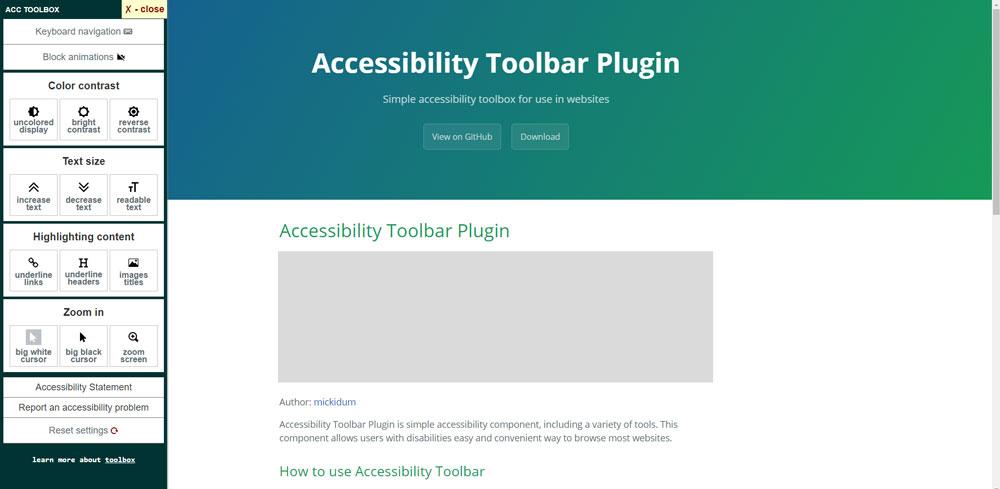
Real User Experiences: Success Stories with Accessibility Plugins
Many website owners have witnessed transformative changes after implementing accessibility plugins on their WordPress sites. As an example, Sarah, a small business owner, found that incorporating an accessibility tool significantly improved her website’s usability. She reported a notable increase in engagement from users with disabilities, which in turn boosted her sales. Sarah’s experience highlights how making a site accessible is not just a legal obligation but also a smart business move.
another inspiring story comes from John, a non-profit association director. After integrating a popular accessibility plugin, he noticed a remarkable impact on the number of inquiries and donations they received. the plugin allowed his organization to reach a wider audience, including individuals who had previously struggled to navigate their site. By enhancing user experience for all visitors, John saw a resurgence in community support.
Accessibility plugins aren’t solely about compliance; they foster inclusivity. Take the example of Emma, who runs a blog dedicated to health and wellness. She started using an accessibility plugin and received heartfelt messages from readers who appreciated the effort to make her content accessible. Many expressed how the adjustments made it easier for them to engage with her posts,leading to an increase in her readership. this demonstrates that enhancing accessibility can cultivate a loyal community of followers.
It’s also worth noting the technical benefits that come with these plugins. Mark, a web developer, implemented an accessibility solution on his portfolio site and was impressed by the dual advantage of improved SEO rankings and enhanced user experience. By ensuring that his website could be easily navigated by everyone, he attracted more clients who value inclusivity in their digital strategies.
| User | Plugin Used | Outcome |
|---|---|---|
| Sarah | Accessibility Widget | Increased engagement & sales |
| John | WP Accessibility | More inquiries & donations |
| Emma | One Click Accessibility | Loyal readership growth |
| Mark | WP Accessibility Helper | Improved SEO & client attraction |
These real user experiences underscore the importance and effectiveness of WordPress accessibility plugins. By prioritizing inclusivity, website owners not only comply with standards but also unlock the potential for greater audience engagement and satisfaction. As the digital landscape evolves, embracing accessibility is becoming increasingly vital for success in reaching and resonating with diverse users.
Step-by-Step Guide to Setting Up Your Accessibility Plugin
Setting up your accessibility plugin is a crucial step towards making your WordPress site more inclusive. Follow these steps for an easy installation and configuration process:
- Choose the Right Plugin: Start by selecting an accessibility plugin that fits your needs. Consider options like WP Accessibility or Accessibility Widget, which are popular among users for their effectiveness and user-friendly features.
- Install the Plugin: Navigate to your WordPress dashboard, go to Plugins > Add New, and search for your chosen accessibility plugin. Click Install Now and then Activate the plugin once the installation is complete.
- Access Plugin Settings: After activation, find the plugin in the Settings menu or on the sidebar.Each plugin has its own settings page where you can customize accessibility features.
- Configure Accessibility Features: Depending on the plugin,you might have options like:
- Font resizing
- Color contrast adjustments
- Keyboard navigation settings
- Alt text for images
- Test Accessibility: After configuring your settings,it’s vital to test the functionality. Use accessibility tools like Axe or WAVE to ensure your site is navigable and user-friendly for all visitors.
- Regular Updates: Keep your plugin updated to ensure compatibility with the latest WordPress version and ongoing support for accessibility standards.
By following these straightforward steps, you’ll be well on your way to creating an accessible website that welcomes all users, regardless of their abilities.Remember, making your site accessible is not just a compliance issue; it’s a commitment to providing a positive experience for everyone.
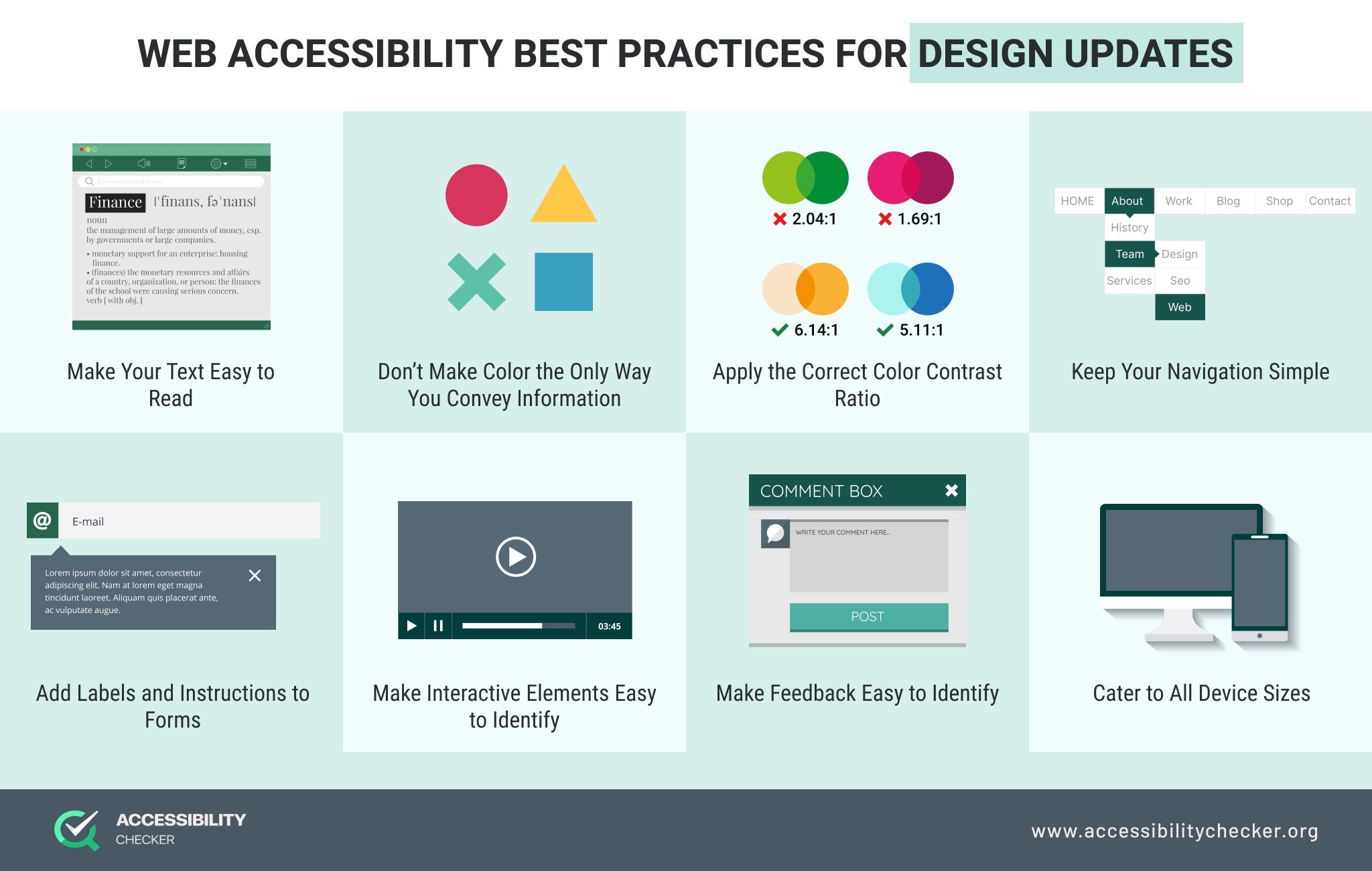
Enhancing User Experience with Accessibility Best Practices
Creating an inclusive web experience is more than just a legal requirement; it’s a moral imperative. With the right tools, you can make your WordPress site more accessible to all users, including those with disabilities. By implementing proven accessibility best practices, you not only enhance user satisfaction but also expand your reach and engagement.
Accessibility plugins play a crucial role in helping you achieve this goal. They provide an array of functionalities designed to assist users in navigating your site with ease. Here are some key features you should look for in accessibility plugins:
- Keyboard Navigation: Ensure that all interactive elements on your site are accessible using the keyboard alone, catering to users who may not use a mouse.
- Screen Reader Compatibility: Choose plugins that work seamlessly with screen readers, providing descriptive labels for images and navigation elements.
- Text Resizing Options: Allow users to adjust text sizes and contrast settings to suit their individual needs.
- Content Structure: Implement semantic HTML and ARIA (Accessible Rich Internet Applications) roles to help assistive technologies interpret your content accurately.
Additionally, consider using a combination of both free and paid plugins to maximize accessibility potential. Here’s a simple comparison table to help you choose the right ones for your site:
| Plugin Name | Type | Key Features | Price |
|---|---|---|---|
| WP Accessibility | Free | Fixes common accessibility issues | Free |
| Accessibility Widget | Free | Customizable accessibility tools | Free |
| WP ADA Compliance Check Basic | Paid | Compliance checks & suggestions | $29/year |
| UserWay | Freemium | Accessibility toolbar, compliance solutions | Starting at $49/month |
By integrating these plugins and embracing accessibility standards, you can foster a welcoming environment for everyone. Remember, accessibility is not just about compliance; it’s about respecting your audience and ensuring they have a seamless experience on your site.The time to act is now—make your WordPress site a place where all users feel valued and included.
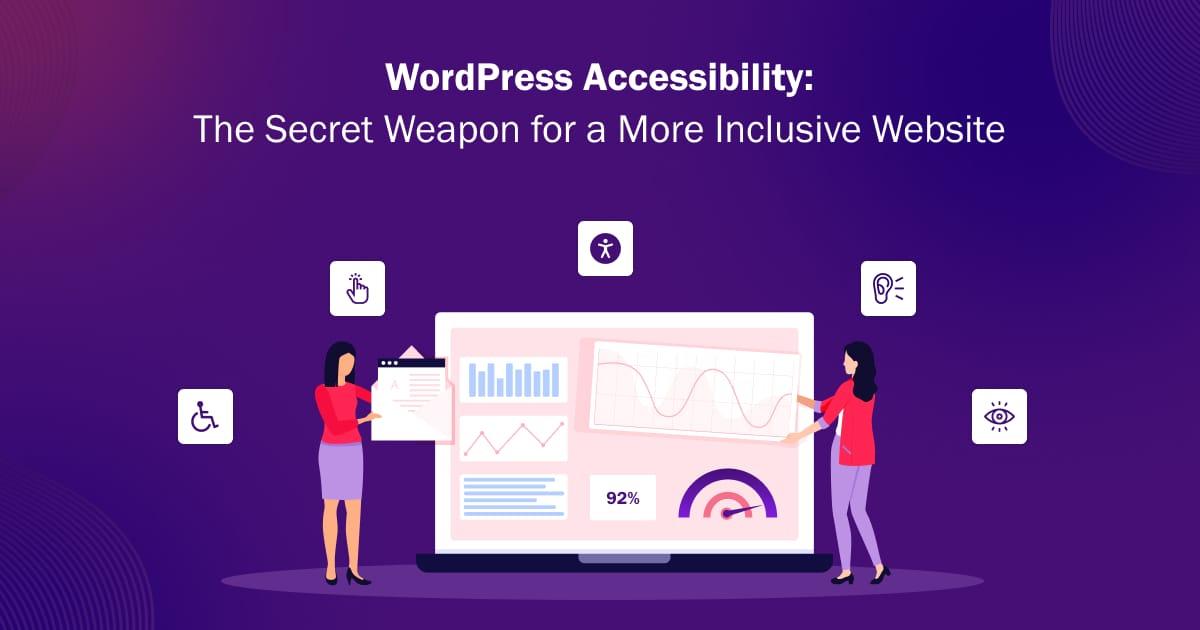
Future Trends in WordPress Accessibility: What to Expect in 2025
As we look ahead to 2025, the landscape of WordPress accessibility is poised for significant conversion. Developers and website owners are becoming increasingly aware of the importance of making online content usable for everyone,including people with disabilities. This growing consciousness is expected to drive the development of more sophisticated accessibility plugins and tools.
One major trend to anticipate is the integration of AI-driven solutions. These plugins will not only automate accessibility checks but also provide real-time suggestions and fixes as users create or edit content.Imagine a scenario where a content editor receives instant feedback on color contrast, alt text for images, or heading structure—all powered by advanced algorithms that learn from user inputs.
Another trend likely to emerge is the focus on personalized user experiences. Future plugins may incorporate features that allow users to customize how they interact with a website. This could include adjustable text sizes, color themes, and keyboard navigation setups tailored to individual preferences. Such flexibility will empower users to create an environment that works best for them, enhancing their overall experience.
For developers, compliance with evolving regulations will be critical. As legislation surrounding accessibility becomes more stringent worldwide,plugin developers will need to ensure their products not only meet current standards but are also adaptable to future requirements. This will likely lead to a surge in plugins that facilitate legal compliance while also enhancing user experience.
community-driven initiatives will play a pivotal role in shaping accessibility trends. More developers and users are expected to collaborate and share best practices, leading to open-source projects that can rapidly evolve and improve. This will create a rich ecosystem where innovations in accessibility are shared freely, benefiting everyone who uses WordPress.
| Trend | Description |
|---|---|
| AI-Driven Solutions | Real-time accessibility checks and suggestions during content creation. |
| Personalized User Experiences | Customizable website interfaces for individual user preferences. |
| Compliance with Regulations | Plugins that ensure adherence to evolving accessibility laws. |
| community Collaboration | Open-source accessibility projects sharing best practices and innovations. |
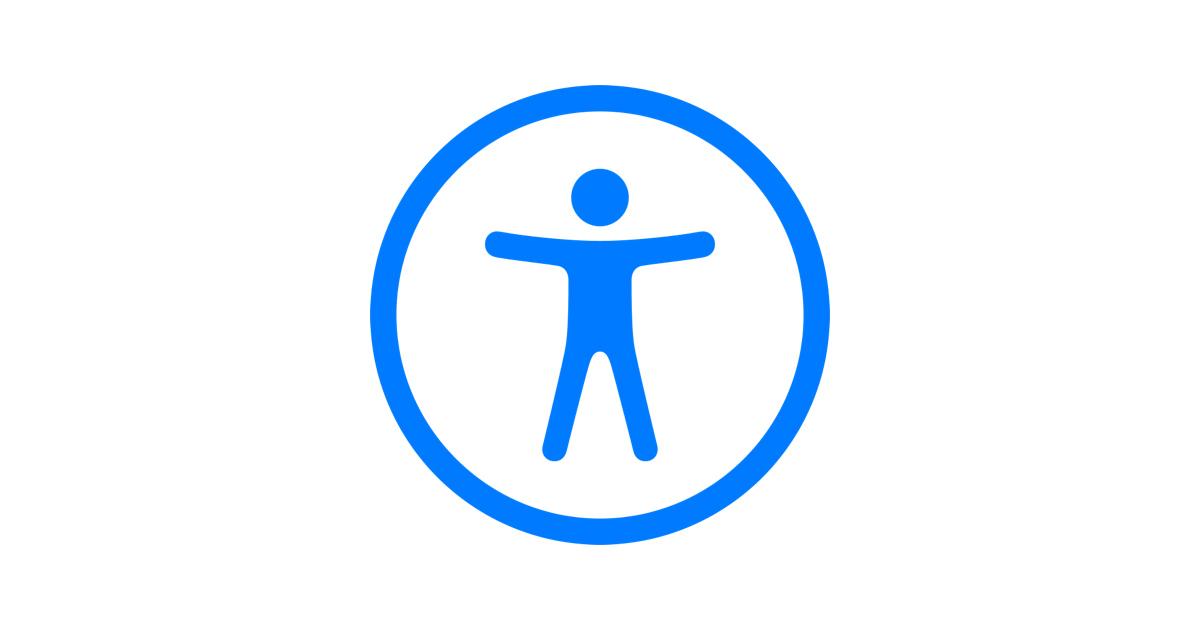
Final Thoughts: Investing in Accessibility for a Better Web Experience
Creating an inclusive web experience is not just a nice-to-have; it’s a fundamental requirement.As more users rely on the internet for daily activities, investing in accessibility becomes essential for every website owner. By leveraging the right WordPress accessibility plugins, you can cater to a broader audience, ensuring that everyone, regardless of ability, can engage with your content effectively.
Accessibility tools offer an array of features that enhance usability. From screen reader support to keyboard navigation, these plugins help bridge the gap for users with disabilities. Not only do they improve the user experience for those who require assistance, but they also contribute to better SEO, enhancing your website’s visibility in search engines. Consider the following benefits of implementing accessibility measures on your site:
- Wider Audience Reach: Attract a diverse group of visitors, including those with disabilities.
- Improved User Experience: Create a smoother, more enjoyable experience for all users.
- Legal Compliance: Reduce the risk of legal issues by adhering to accessibility standards.
- Enhanced SEO: improve your site’s ranking with better structure and tagging.
Incorporating accessibility plugins not only fulfills a moral obligation but also represents a savvy business decision. As the digital landscape evolves, user expectations increase, and a lack of accessibility can result in lost opportunities. By prioritizing accessibility, you align your brand with values of inclusivity and responsibility, which resonate strongly with today’s consumers.
| Plugin Name | Key Feature | Cost |
|---|---|---|
| WP Accessibility | General Accessibility Improvements | Free |
| accessibility Checker | Automated Site Audits | free / Premium |
| One Click Accessibility | Multiple Accessibility Options | Free |
| WP ADA Compliance Check Basic | ADA Compliance Testing | Free |
Ultimately, the decision to invest in accessibility evolves beyond mere compliance. It’s about fostering a more inclusive digital ecosystem where every visitor has the prospect to engage and interact with your content. As you explore the plugins available for WordPress, remember that your choices can make a significant difference in creating a better web experience for everyone.
Frequently Asked Questions (FAQ)
Q&A: 9 Best WordPress Accessibility Plugins for 2025 (Free + Paid)
Q: Why should I care about website accessibility?
A: Great question! Website accessibility ensures that everyone, including people with disabilities, can access and navigate your site. It’s not just a legal requirement in many places; it also broadens your audience and enhances user experience.A more accessible site means happier visitors, which can translate into better engagement and conversions!
Q: What makes a good accessibility plugin?
A: A top-tier accessibility plugin should be user-friendly, offer customizable options, and provide comprehensive features that address various accessibility needs. It should also be compatible with most themes and plugins,support screen readers,and help you meet compliance standards like WCAG (Web Content Accessibility Guidelines).
Q: Are all the plugins in your list free?
A: Not at all! Our list includes a mix of free and paid plugins. Free plugins can be a great starting point,but paid options frequently enough offer more robust features and support. Investing in the right paid plugin can save you time and effort while ensuring your site is fully accessible.
Q: Can I use multiple accessibility plugins at the same time?
A: While it’s technically possible, it’s not recommended. Using multiple plugins can lead to conflicts and performance issues. Instead, choose one that best fits your needs and offers the features you require. Each plugin has unique strengths, so do a little research to find the best match for your site.
Q: How do I know if my website is accessible?
A: There are several tools available to test your website’s accessibility. Tools like WAVE, AXE, or even online validators can analyze your site for common accessibility issues. Additionally,using the plugins on our list can definitely help you identify and fix these problems as you go!
Q: What’s the best plugin for beginners?
A: If you’re just starting out,I recommend WP Accessibility. It’s user-friendly, has a solid support community, and offers essential features like skip links and color contrast adjustments. It’s perfect for those new to the accessibility world!
Q: How do I choose between free and paid plugins?
A: It ultimately depends on your specific needs.If you have a small personal blog, a free plugin may do the trick. Though,if you run a business site or e-commerce store,a paid plugin can offer advanced features like detailed reports and dedicated support. Assess your requirements and budget to make the best choice.
Q: will using these plugins affect my site’s performance?
A: That’s a valid concern! While some plugins can slow your site down, many of the top accessibility plugins are optimized for performance. It’s always a good idea to test your site’s speed before and after installing any plugin. Look for plugins that have a reputation for being lightweight and efficient.
Q: How often should I update my accessibility plugins?
A: Regular updates are crucial! Plugin developers frequently release updates to patch security vulnerabilities and improve functionality.It’s a good practice to check for updates at least once a month,or whenever you notice a new version available. This helps ensure your site stays accessible and secure.
Q: What are some key features to look for in an accessibility plugin?
A: When exploring accessibility plugins, look for features like keyboard navigation support, image alt text management, ARIA (Accessible Rich Internet Applications) attributes, and customizable color contrast options. These features will significantly enhance usability for all visitors.
Q: What if I need more help with accessibility beyond plugins?
A: If you find that plugins aren’t enough, consider hiring an accessibility consultant or web developer who specializes in accessibility. They can provide tailored advice and help implement best practices on your site, ensuring you meet all necessary standards.
These questions should give your readers a solid understanding of why accessibility matters, how to choose the right plugins, and what features to look for as they enhance their WordPress sites for 2025!
Final Thoughts
As we wrap up our exploration of the 9 best WordPress accessibility plugins for 2025, it’s clear that creating an inclusive online experience isn’t just an option—it’s a necessity.Whether you’re running a personal blog, an e-commerce site, or a corporate platform, these plugins can make a world of difference for your visitors.
Imagine the satisfaction of knowing that your website is accessible to everyone, regardless of their abilities. with both free and paid options available, there’s something for every budget and need. By implementing these tools, you’re not just enhancing your site’s usability; you’re also embracing a more equitable digital landscape.
So, why wait? Dive in, choose the plugins that resonate with your vision, and start making your website a more welcoming place. Your users will thank you, and you’ll be proud to lead the charge towards a more accessible internet. If you have any experiences or recommendations of your own, please share them in the comments below! Let’s keep the conversation going and work together to make the web a better place for everyone!

